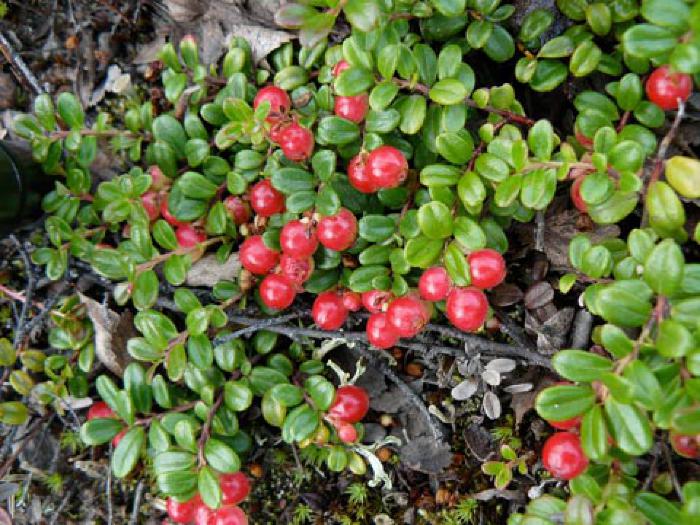Lowbush Cranberry, Lingonberry — Kenegtaq

The lowbush cranberry, or lingonberry (Vaccinium vitisidaea), is a creeping plant with thick, oval, shiny, green leaves; pink, bell-shaped flowers; and round, red berries. The word kenegtaq literally means “something pressed down.” This plant flowers in mid to late June and is commonly found throughout Kodiak’s spruce forests, particularly in wet areas.
Alutiiq people harvest the bright red, sour cranberries as food, preferably after a heavy frost when the berries are sweetest. They were eaten as a condiment with fish or mixed into Alutiiq ice cream. Unlike many juicier berries, lowbush cranberries can be stored for a long time. Those used before freezing weather were traditionally kept in freshwater in a cool place. After freezing weather, the berries were stored in gut containers filled with seal oil.
The lowbush cranberry plant has medicinal properties. Alutiiq people prepared tea made from the leaves to treat colds. Eating raw lowbush cranberries is also recommended for sore throats, canker sores, and kidney problems.
